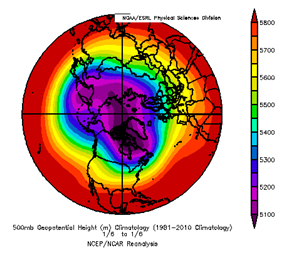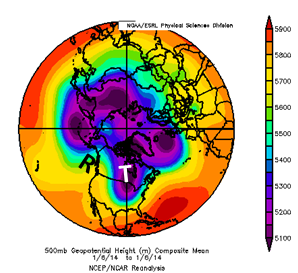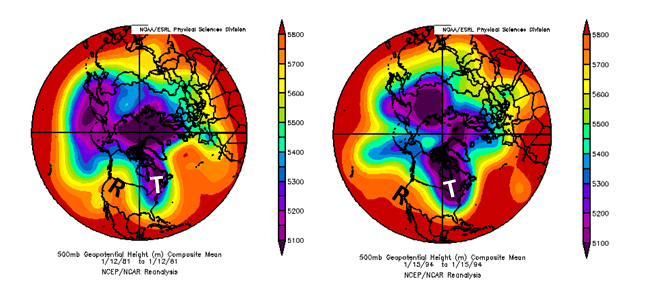This week’s brief but bitter cold snap over more than half the country prompted intense discussion about the polar vortex ranging from educational to bombastic.
So let’s be clear: The cold snap this week was unusual but not entirely unprecedented. A few super-cold days don’t disprove global warming, just like a day of rain doesn’t end a drought. At the same time, we don’t yet know whether climate change will change the odds of future outbreaks of bitter cold. Research is still underway, and as of now, we shouldn’t necessarily expect these events to be more or less frequent in future winters.
Here’s a Q&A to cut through the hype:
- What is the polar vortex? The polar vortex describes the air circulating aloft (thousands of feet above the ground) about the North Pole, and its extent is marked by a ribbon of strong winds that is often called the “jet stream.” (We most commonly focus on the North Pole, but a similar circulation is present around the South Pole, too).
In the map (Figure 1), which is from the point of view of the North Pole, the vortex corresponds to purple and blue colored areas. The band where the colors change from blue/purple to red/yellow indicates the location of the jet stream, or the outer edge of the vortex. Winds are strongest where this color gradient is tightly packed (e.g., over the Pacific Ocean and North Atlantic Ocean). It tends to be quite cold at the surface below the purple areas, and warmer under the red/yellow areas.
It’s important to note that this figure is an average of many winter days. On any given day, we would see a number of deviations from this average pattern.



